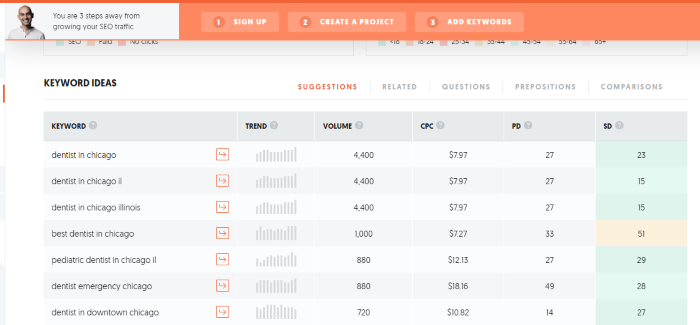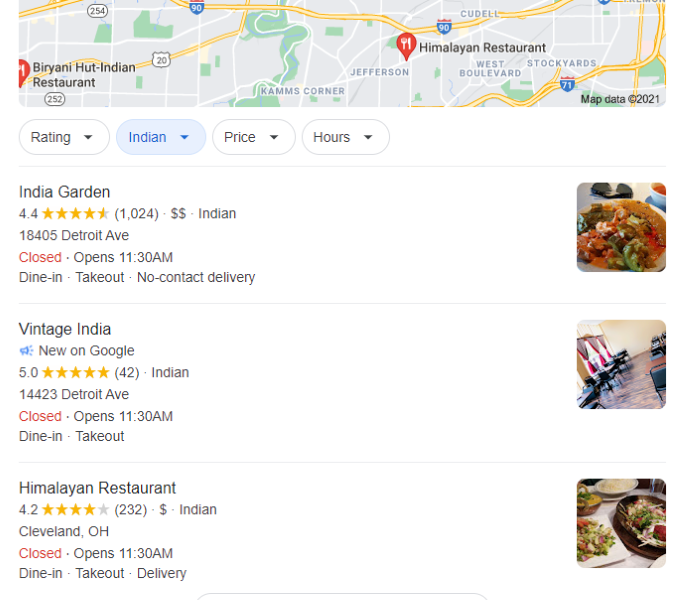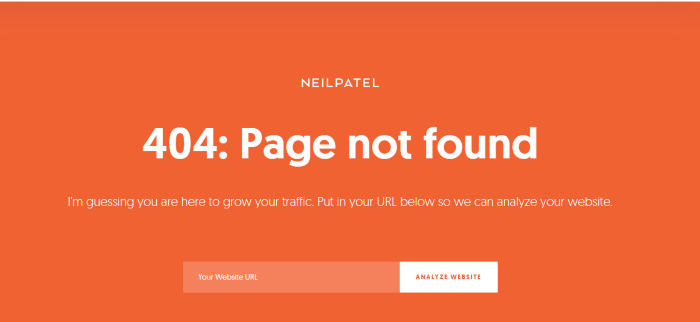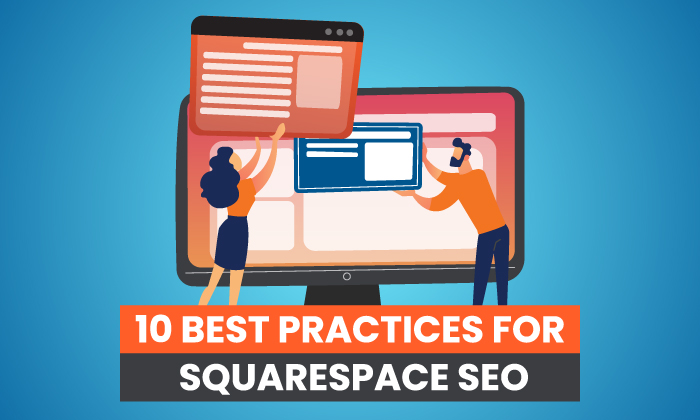If you’re looking to build an SEO-friendly website, Squarespace is a solid choice. It offers easy-to-use templates and plenty of SEO tools to help your site rank better in Google search results.
Not sure where to get started? I’ll guide you through everything you need to know about Squarespace SEO, including what best practices to follow and the tools Squarespace offers.
Why Should You Care About SEO for Squarespace?
Even the most elegant website won’t do you much good if no one sees it. SEO is the act of optimizing a website so your target audience can easily find it.
SEO for Squarespace is about ensuring your Squarespace website plays well with search engines.
If you’ve used other website builders such as WordPress, you might be familiar with SEO plugins like Yoast. Unfortunately, those won’t work with Squarespace.
Other site builders, like Wix, offer minimal SEO tools that make it challenging to improve your ranking.
The good news is Squarespace comes with a ton of advanced SEO tools built-in. Understanding how to use them to optimize your site is crucial to your online success.
10 Tips for SEO for Squarespace
It’s easy to get overwhelmed by all the SEO advice out there. There’s on-page SEO, off-page SEO, and even SEO best practices for developers.
With Squarespace, you don’t have to worry about the most technical aspects of SEO. For example, all their sites are mobile responsive out of the box.
However, several steps will help your site rank well in Google, Bing, and other search engines. Here are ten best practices to improve your Squarespace SEO.
1. Perform Keyword Research
The core of SEO is keyword research. No matter what builder you use, it’s essential to take the time to find out what keywords your site should target. I’ve written several in-depth guides about keyword research, but I’ll explain the basics here.
Keywords are the words or phrases users type into search engines to find your website.
Sometimes they are pretty obvious; for example, a dentist in Chicago will probably target keywords like “chicago dentist.”
Other terms might be less obvious, such as “dentist near me” or “root canal.” That’s where a good keyword research tool, like my tool Ubersuggest (it’s free!), can be helpful.
Type in your main keyword and see what other terms come up:

These are terms you’ll want to use on your website in your domain name, URLs, and SEO page titles. (Don’t worry, we’ll cover how to do all that later.)
Consider researching what terms your competitors use as well. This can provide insight into what terms users are searching for.
2. Optimize Your Domain Name
While domain names aren’t a direct SEO factor, they can impact your overall SEO performance.
For example, if someone wants a dentist in Chicago, do you think they’ll click on a site like www.chicagodentist.com or www.marymandyddc.com?
Using keywords in your domain name is a simple way to clarify what your site is about and start building your brand.
If you already have an established website that is ranking well, there’s no need to change it (though you could redirect your site to a more SEO-friendly domain if you wanted).
If you are just getting started, make sure to include keywords in your domain name and make it easy to remember.
3. Use Keywords in Your URLs
Remember those keywords we looked at in step one? Make sure to include them in your URLs.
You’ll also want to make sure your URLs are clean and easy to understand, especially for service or product pages.
For example (sticking with the dentist example from above), the pediatric dentist service page should be www.chicagodentist.com/pediatric, not www.chicagodentist.com/he12909vhsw#.
Clean URLs perform better in search, and they look more trustworthy to users.
Here’s how to change your URL in Squarespace:
- From the Home menu, click Pages.
- Click the gear icon to open page settings.

- Type your new URL in the URL slug field.
- Select Save.
4. Integrate With Google Search Console
Google Search Console is a free tool that helps you monitor and maintain your Google presence. Integrating it with Squarespace allows the two sites to share data and makes it easier to see where your SEO efforts are paying off and where they’re falling flat.
The console makes it easy to verify your site and lets you see all that awesome Google data right in your Squarespace Analytics dashboard—no need to visit two sites.
To integrate, follow this guide on the Squarespace support page.
5. Add SEO Page Titles and Descriptions
SEO page titles and descriptions (also called meta titles and descriptions) are short blurbs displayed in the search results that tell users what they’ll find on your page.
Get these right, and your traffic can skyrocket. Ignore them, and Google will create them for you—and they might not be as effective.
Here’s how to update your SEO page titles and descriptions on Squarespace:
- In the Home menu, select Pages.
- Click the gear icon next to the title.
- Select the SEO tab, then add your title to the SEO title field.
- Select Save.
You can (and should) add SEO titles to all your pages, including blog posts and product pages. This guide to meta titles and descriptions will walk you through how to create SEO-friendly titles.
In general, meta titles and descriptions should:
- include the main keyword you want to target
- offer clear details about what the user will find if they click
6. Integrate With Google My Business
If you have a brick-and-mortar business, this is a step you can’t ignore. Google My Business is a free tool that lets you manage how your business appears in Google Maps and the search results.
For example, you might have seen the “Google three-pack” when you search for a local business:

Google pulls the information about reviews, pricing, and hours from the Google My Business account.
GMB is valuable, but for many smaller businesses managing another platform is a hassle. Squarespace makes it easy by interacting directly with Google My Business to manage your listing.
Here’s how to integrate your Squarespace site with GMB:
- From the Home menu, select Marketing, then Location Management.
- Select Add Location.
- Click Import from Google.
If you don’t already have a GMB account, you can set it up in Squarespace by following the prompts. Once you’ve integrated, you can push and pull data from your website to Google automatically.
7. Create a Custom 404 Page
A 404 page is the page users see when they click on a link that doesn’t exist or has been moved but not redirected. Here’s mine:

When used correctly, 404 pages can boost your SEO and improve user experience.
I use it to direct users to my SEO tool, but you can also direct users to blog posts, product pages, or other important site pages. This keeps users on your site and helps them find the information they need.
A custom 404 page increases time on page, which can improve SEO.
Here’s how to create a custom 404 page in Squarespace.
8. Check Your SSL Settings
SSL certificates (secure sockets layer) encrypt the data that passes between your website and your server. It improves website security, making it crucial for all websites but especially e-commerce sites.
In addition to just being a good idea, it’s also a Google ranking factor, which means enabling SSL on Squarespace is beneficial for SEO.
Luckily, Squarespace makes this process pretty easy. In fact, all their sites are automatically protected with an SSL certificate. However, you can adjust several settings based on your needs.
Here’s how to check your SSL certificate settings in Squarespace:
- From the Home menu, select Settings, then Advanced.
- Choose SSL.
- Select Security Preferences.
- Check the box for Secure and HSTS Secure.
- Click Save.
9. Create High-Quality Content
High-quality content is a cornerstone of good SEO. It provides fresh content (which Google likes) and offers useful information your users want and need.
Squarespace makes it easy to add a blog to your website, though many themes come with them already in place.
Once you’ve created your blog page, it’s time to get writing. You can write yourself or outsource it to a freelancer. I recommend writing yourself at first to get an idea of what type of content your target audience wants.
Start by coming up with topic ideas. What questions do you answer most often? What pain points do your customers share? Aim to solve those problems.
Here are a few other tips for creating useful, high-quality content:
- Offer useful information: Answer a question, provide a step-by-step guide, or give advice. Keyword research can help with this.
- Break up content: Use headings, lists, and pictures to break up longer content and make your piece easy to read.
- Be specific: Don’t write for everyone; instead, write for your specific target audience (or even a subset of your audience). For example, this post isn’t just about SEO in general; it’s specifically for Squarespace users. A dentist could write about “how to brush your teeth,” but “how to teach your kids to brush their teeth properly” is likely to be more useful.
- Optimize your content: Once you’ve created your useful, high-quality content, review Squarespace’s content best practices to ensure your audience can find your great content.
10. Add Internal Links to Important Content
Internal links are links on your website to other pages on your site. They improve user experience by helping users find pages, but they’re also great for SEO.
Internal links help Google understand which pages on your site are most important. Search engines also use internal links to pages on your site.
However, don’t go overboard with internal links. I aim for 5 to 10 internal links per 2,000 word article, which seems to be a happy medium. If you only have 10 pages on your site, you’d include fewer links.
You’ll also want to optimize your anchor text (the words that users click to follow a link).
Finally, make sure the internal links you add are useful. This isn’t a place to spam users about your newest product; it’s about leading them to useful pages.
Here is how to add text links to your Squarespace site.
Squarespace SEO Frequently Asked Questions
Which template is best for Squarespace SEO?
Most Squarespace templates are pretty SEO-friendly. However, Brine gets top marks for the ability to customize headers, content insets, and adjust mobile styles. You can also add advanced features like parallax scrolling.
Is Squarespace good for SEO?
Yes. Squarespace offers plenty of SEO tools and features to help you optimize your website. While there are some things you can’t access, it offers a number of SEO tools and features.
Is optimizing SEO for your Squarespace free?
SEO features are included in their paid plans, so it is free in the sense that you don’t have to pay extra just for SEO. However, some features are only available to Business or Commerce customers. Make sure to consider your SEO needs when comparing plans.
What are the downsides to Squarespace, and how can you overcome them?
One of the major downsides to Squarespace is the lack of control. Although many templates are easy to adjust, the customization is limited. You can overcome these issues by carefully considering your template options and choosing a format that will grow with your business.
Squarespace SEO Conclusion
Understanding how to implement successful SEO practices on Squarespace is crucial to online success. While SEO for Squarespace is a little different than other website builders, they still offer a wide range of SEO tools.
If you haven’t built your site yet, I strongly recommend starting with keyword research. If you get stuck, my team is happy to help.
Do you use Squarespace? Have you had success with their SEO tools?

See How My Agency Can Drive Massive Amounts of Traffic to Your Website
- SEO – unlock massive amounts of SEO traffic. See real results.
- Content Marketing – our team creates epic content that will get shared, get links, and attract traffic.
- Paid Media – effective paid strategies with clear ROI.

